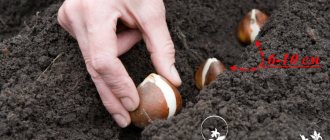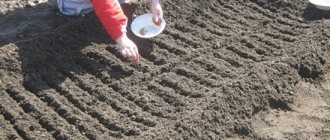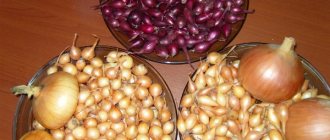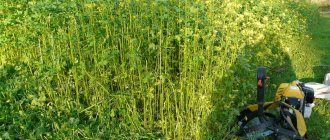North America is considered the birthplace of the sunflower, but it grows almost everywhere, and has been known as a cultivated plant since the end of the 16th century. It is an annual plant, has a powerful root system and grows up to 3 m in height. As an unpretentious and grateful plant, the sunflower responds to any care for itself with rapid growth and abundant flowering. It grows in ordinary garden soils, although it prefers nutritious and light soil. The most important thing for him is a sufficient amount of moisture and plenty of sunlight.
Warnings
- Giant sunflowers (those that grow up to 180cm) are not suitable for growing in a container unless you get them in a very large container, such as half a barrel. If you try to grow these flowers in a small container, they are unlikely to grow well, and you will most likely watch the flower wither throughout the process (it is quite sad to see such a delightful flower fail to reach its full potential).
- Make sure the pot has drainage holes, otherwise the seeds may rot.
Sunflower varieties
The familiar sunflower is represented by a wide variety of varieties, including hybrid ones, bred thanks to the successful work of breeders.
All sunflower varieties are divided into 4 groups:
- Oilseeds.
- Confectionery shops
- Simple.
- Hybrid.
Hybrid varieties allow you to harvest 15% more yield than conventional varieties. The seeds can be consumed fresh or processed into oil.
One of the popular sunflower hybrids is “Bogdan”. Representatives of this variety grow on poor soils and do not require additional fertilizer. The variety is resistant to drought, cold, and also tolerates large amounts of precipitation. The height of the trunk ranges from 150 to 180 cm, and the diameter of the basket is on average 18 cm. The seeds are large, with a high oil content. The ripening period is 118 days.
What you will need
- Sunflower seeds from the nursery in bags with a stamp. Note: you can try to grow a plant from sunflower seeds sold in the supermarket, but you don't know what variety it will be and they may simply not sprout. Don't try to germinate seeds without the husk, as removing the husk will expose the seed to air and light, and certainly don't try to grow sunflowers from roasted and salted seeds.
- Water
- A clay pot or other suitable round container (minimum pot diameter is 30 cm and above if you are growing more seeds) or a window or balcony box, milk crate, half a barrel, etc., preferably all containers should be wide.
- The soil
- Rotted compost for nutrition
- To improve drainage, place pebbles at the bottom.
Article information
Categories: Gardens
In other languages:
English: Grow a Sunflower in a Pot, Español: cultivar un girasol en una maceta, Italiano: Coltivare un Girasole in un Vaso, Português: Cultivar um Girassol em um Vaso, Deutsch: Sonnenblumen als Topfpflanzen ziehen, Français: cultiver un tournesol en pot , Bahasa Indonesia: Menanam Bunga Matahari di Pot, Nederlands: Een zonnebloem in een pot kweken, العربية: زراعة عباد الشمس في إناء, Tiếng Việt: Trồng hướng d ương trong chậu, 日本語: ヒマワリを鉢植えで育てる
- Edit
- Write a thank you letter to the authors
This page has been viewed 45,242 times.
Was this article helpful?
How to grow sunflowers in the country, planting and care
To date, more than 60 varieties and hybrids of oilseed sunflowers have been developed. The culture is an excellent honey plant, does not require care, and can withstand frosts down to minus 5 degrees Celsius.
Preparing and planting sunflower seeds
In order to ensure that the oilseed sunflower harvest does not disappoint, you need to take a responsible approach to choosing a site, select and prepare high-quality seeds, and also follow planting rules that are not complicated, but necessary to obtain a good harvest.
Selection and processing of a plot for sunflowers
Sunflower grows on any soil, but produces a good harvest on slightly acidic loams, black soil, and chestnut soils. Wetlands with high acidity, as well as sandstones, are not suitable for productive cultivation “for yield”.
It is not recommended to sow sunflowers after sugar beets and tomatoes. In these areas, the soil contains a large amount of nitrogen, and the crop does not like it. This fact must also be taken into account when applying fertilizers. A field previously sown with winter grains, corn, and cabbage is better suited.
Sunflower quickly depletes the soil and cannot be grown in one place for two years in a row.
Also, keep in mind that after sunflower the soil requires restoration and is not suitable for almost all garden crops. After it, the soil needs to be fertilized and spring grains, peas or beans should be planted - they will help quickly restore the depleted soil. You can return to sowing sunflowers in one area only after 7 years.
In autumn, phosphorus-potassium fertilizers are applied to the site: superphosphate, potassium sulfate. Then they dig up the soil deeply so that there is no subsoil or compacted areas of soil at the level of the roots.
Preparing seeds for planting
Sunflower is prone to cross-pollination, so you should not sow seeds from the previous harvest. It is better to purchase them in a specialized store. Before sowing, planting material is calibrated and treated.
Calibration is carried out using a sieve, leaving only the largest specimens. Seeds are also checked for grain volume, or “fullness” - dipped in a saline solution (a teaspoon of salt per liter of water) and only those that sank to the bottom of the container within 10 minutes are used.
Preparing sunflower seeds for planting
Growing sunflowers requires treating the seeds before planting, as pests love to profit from them. They use chemicals: Prestige, Agrovital, Commander.
You can prepare a folk remedy for treating sunflower seeds from 100 g of twisted garlic and onion peels. The components are poured with two liters of boiling water overnight, filtered in the morning and the seeds are immersed in the solution for 12 hours. This method is more humane and safer for birds and animals.
Sunflower planting
Seeds are sown in May, when the soil warms up to 8 degrees Celsius. In the area, holes are made with a hoe, 5-7 cm deep. The greater the distance between the holes, the larger the caps will grow. The recommended planting step is 50 cm.
First sunflower shoots
Place 2-3 seeds in each hole and cover with soil. The soil must be moist.
Sunflower cultivation technology
Shoots appear after 10 days. From now on, it is necessary to water the sunflower regularly. The root system and above-ground part of the plant are quite large and consume a lot of moisture. The crop does not tolerate proximity to weeds, so regular weeding is required.
Sunflower seedlings are fed in the 2-3 leaf phase
In the phase of 2-3 leaves, it is necessary to fertilize sunflower with 40 g of azophoska and 20 g of urea per 10 liters of water. Fertilizers are applied after preliminary watering.
With the beginning of the formation of seed pods, potassium fertilizers (potassium sulfate or potassium chloride) are applied. This helps to increase the level of drought resistance of the plant, the formation of large seeds and an increase in their oiliness.
From the conception of achenes to flowering, the sunflower's need for moisture doubles. Therefore, the rate and frequency of watering during this period is increased.
Control of sunflower diseases
Before growing a sunflower in the country, you need to prepare to protect it from many diseases and pests, since crop yields often suffer precisely because of them. Of the fungal diseases, the most dangerous are: downy mildew, phomosis, rust, phomopsis, white rot.
They attack leaves and seed pods. Sunflowers affected by fungi lag behind in development and their caps do not develop. The first signs of most diseases can be noticed in the 2-3 leaf phase, but the main symptoms appear later. To combat diseases, plantings are sprayed before flowering with Mikosan-B, Fitosporin, Trichodermin.
Sunflower is often affected by broomrape (lat. Orobanche), a parasitic plant that settles on the roots of the crop. It has no roots or leaves and feeds on sunflowers.
Sunflower broomrape feeds on the sap of the crop
During the growing season, broomrape produces about 100 thousand seeds, which remain viable in the soil for up to 15 years. Seeds germinate only in the presence of a host plant. There are no drugs against the parasite, so you should choose resistant varieties and also observe crop rotation.
Sunflower pests and their control
Many pests love to eat oilseed sunflowers. The sunflower moth (lat. Homoeosoma nebulella) is most common. She lays eggs in the basket at the stage of its formation, and later the larvae hatch and gnaw out the seed kernels. Also common pests are: southern weevil, wireworm, sunflower longhorned beetle, and thorn beetle.
Moth larva on sunflower
The following will help reduce the likelihood of insect damage: treating seeds before planting, timely removal of weeds, and maintaining crop rotation. If pests are found, the plantings are treated with insecticides - Taran, Desiccant, Actellik.
Birds can cause great damage to crops. To scare them away, bright multi-colored ribbons are tied near the sunflower caps. They also use tinsel or old computer disks. Often, summer residents install a scarecrow on their property.
Protecting sunflowers from birds
Wrapping the heads with breathable fabric, such as gauze, will help protect the seeds from birds and pests. This should be done only after pollination and left in this form until the seeds are completely ripe.
Sunflower harvest
The sunflower harvest begins in August. By this time, the heads bend toward the ground, the outer petals dry out and fall off, and the seeds turn black.
As the seeds ripen, they become heavier and the sunflower head droops.
Ripe caps are cut off and, if necessary, placed to dry (1-2 days). Remove the seeds over a spread cloth. The heads rub against each other until all the seeds fall out.
The seeds are dried in the shade, poured onto a substrate in one layer. After waiting for windy weather, the seeds are sifted. To do this, they are taken out into the open, collected in any container and poured back from a height of human height, thereby removing debris.
Sunflower head ripe for harvest
Store sunflower seeds in a dry place in hermetically sealed containers or in non-woven bags.
How to roast sunflower seeds in the microwave. How to roast sunflower seeds in the microwave
Microwave ovens are widely used for cooking and heating a wide variety of dishes. Using a microwave, you can even fry sunflower seeds, a favorite delicacy of many Russians.
Choose your recipe
You can cook regular and salted ones in the microwave. True, connoisseurs of the delicacy claim that their taste is slightly different from the usual. But if you follow all the nuances, the seeds will not burn and will cook very quickly.
how to roast sunflower seeds in the microwave
First of all, you need to sort out and rinse the seeds in running water, and dry them thoroughly using paper napkins.
then they are poured onto a suitable dish. you need to make sure that the seeds are evenly spaced. if they are placed in a heap or scattered one by one, the seeds may either not be fried or burnt. The ideal vessel for roasting seeds is a glass dish with high sides. Simpe Wine News: simply about the best wines
Kakprosto.ru recommends the magazine Simpe Wine News Simple Wine News is a magazine about wines published by Simple, the largest Russian wine supplier. We recommend SWN to anyone who doesn't want to look confused in front of the wine shelf in a store. Read
Cooking time depends on the type of microwave oven. Therefore, it is better to prepare fried seeds in stages. After placing the dish in the oven, turn on the maximum heating mode for 1 minute. After this, remove the plate from the microwave, mix the seeds and let them cool slightly. The procedure is repeated until the seeds are sufficiently fried. Thus, the optimal frying time can be determined. If you need to turn on the oven for 1 minute 4 times to get delicious aromatic seeds, the next time you cook, you can immediately set the timer for 3 minutes. Next, remove the seeds from the oven, stir and leave for another 1 minute.
how to fry salted sunflower seeds in the microwave
as in the previous recipe, the seeds must first be washed and cleaned of any debris. Having dried the seeds, they are transferred to a glass dish with high sides, poured with a small amount of vegetable oil and mixed. then the seeds are sprinkled with finely ground salt and mixed again. Thanks to the vegetable oil, a thin film is formed on the surface of the sunflower fruit. it tightly binds the husks of the seeds with small grains of salt. Set the microwave timer for 1 minute and fry the seeds at medium heat. Having taken the dish out of the oven, the seeds are mixed and tasted. if they are not fried enough, the procedure is repeated. By the way, experts in cooking seeds in a microwave oven claim that the taste of the finished product will be much better if you do not rush to remove the dish from the microwave oven after the end of roasting. It is enough to keep the seeds in a closed and switched off oven for another 15 minutes.
Bottom line
Even a novice gardener can grow sunflowers in the country and reap a good harvest. Particular attention should be paid to preparing seeds for sowing, timely watering, removing weeds and combating dangerous diseases and pests. If the sunflower cultivation technology described in our material is fully followed, you will reap a magnificent harvest of tasty and oily seeds.
Many lovers of growing ornamental plants plant sunflowers in their dachas. Growing a sunflower from a small seed is a very interesting process. The sunflower is growing by leaps and bounds. A small seed is planted in the ground, and soon from this seed grows a real decoration for any dacha - a bright yellow sunflower. Many novice gardeners mistakenly believe that growing sunflowers from seeds in the middle zone is quite difficult, because sunflowers grow well only in the south.
Such gardeners do not plant sunflowers on their plots, and it is completely in vain. These wonderful flowers, which delight the eye all summer, grow beautifully in central Russia. The main thing is to grow sunflowers from seeds correctly.
How to grow a sunflower from a seed
Before you start growing sunflowers from seeds, you need to properly prepare the planting material. You should not use roasted seeds for planting, which are sold on trays on the street or in packages in supermarkets. Such seeds may contain various flavoring additives (salt, spices), and because of them the seed may simply not germinate. The ideal option is seeds from last year's sunflower, which was grown at home or in the country.
You can also purchase seeds in specialized stores for gardeners, in the seed department. In this case, the main advantage is that you can choose one of several varieties of this wonderful flower: more frost-resistant, or, conversely, more heat-loving, more “capricious,” or, conversely, more unpretentious. You can also choose sunflower varieties with different shapes and shades of flowers. However, you should not rely on the picture on the packaging, because the result may differ greatly from the photograph. The main thing is to look at the expiration date of the seeds. This option is suitable for “advanced” gardeners who are well versed in different varieties of sunflowers.
And for those who are planting sunflowers on their plot or at home for the first time, we can advise you to simply purchase unroasted sunflower seeds at any grocery store and use them as planting material. Planting material must meet the following requirements:
- The seeds should be large;
- They should be completely covered with peel;
- The seeds should not show signs of rot or mold (greyish coating, characteristic unpleasant odor);
- You should not select seeds for planting if they were stored in places where mice or rats live (for example, in a basement, in a village barn).
Before planting, the seeds must be sorted. If there are larvae of harmful insects or particles of mouse droppings in the planting material, it is better to choose planting material from another bag. Seeds that are selected for planting should be stored in a linen bag in a cool, dry, dark place. The main enemy of sunflower seeds intended for planting is high air humidity. The ideal place to store seeds is a cabinet with closing doors.
Before planting seeds, you must treat them against pests and fungi. Planting begins in the spring, the main condition is that the air temperature is above eight degrees. Therefore, planting sunflowers is not tied to a specific month; in more southern regions, planting can be done around mid-April, in more northern regions - around the beginning of May . If the temperature stays above eight degrees for several days, you can safely go out to the site and begin the “sowing campaign.”
How to plant sunflowers in the country house, garden or vegetable garden
Growing sunflowers from seeds is a fascinating activity, although quite painstaking.
It is better to plant in warm, dry weather, preferably at noon or afternoon, when the soil has already warmed up thoroughly. It is not recommended to plant seeds early in the morning or late in the evening, when the soil is cold. Those who are afraid to plant seeds directly in open ground because of the “vagaries” of the weather can plant the seeds at home in a pot, wait for the first shoots, and then plant the plant on the plot, just as they plant cucumber or tomato seedlings. If a novice gardener decides to plant seeds directly in open ground, the sequence of actions will be approximately as follows:
- Determine the location. Many gardeners like to plant sunflowers along the edges of the plot, since the overgrown sunflower reliably closes the plot from prying eyes, like a hedge. But anyone who wants to get a good harvest of seeds should choose a separate bed for sunflowers in a well-lit place. The name itself suggests that this wonderful flower loves the sun;
- Next, you should form holes for planting;
- A seed is placed in each hole and carefully sprinkled with soil;
- When all the seeds are planted and properly covered with soil, they can be watered, but very carefully so as not to wash away the soil. It should be moderate watering.
Helpful advice
When the first shoots appear, sunflowers must be fed. This crop is especially “responsive” to complex fertilizers that contain potassium. If the seedlings have already become quite elongated, but they are still thin, and there is a strong wind outside, you can tie up the sunflower in the same way as tying up tomatoes. Then, when he gets stronger and gains strength, he can be “freed” from the support .
In central Russia, sunflowers ripen around the end of August - beginning of September. You can determine the degree of maturity of sunflowers by the color of the seeds. If the sunflower is not yet ripe, the seeds will be light gray. Then they gradually darken and become black. When the sunflower seeds are fully ripe, you can begin harvesting. The flower heads are carefully cut off, and the seeds are removed and laid out to dry. Then planting material for next year is selected from these seeds.
Growing sunflowers: practical recommendations
Growing has its own characteristics . In order for growing these flowers to become a pleasure, you need to know how to approach them.
The flower needs regular watering, and it is also necessary to feed it in a timely manner. Many gardeners are surprised that a sunflower, which bore fruit beautifully last year, becomes practically “sterile” the next year. The reason for such metamorphoses is most often very simple. A gardener should know that sunflowers should never be planted in one place for two years in a row, because they take all the beneficial substances from the soil. But after a year or two it can be planted again in its usual place.
The flower is very popular among those who keep a small apiary in their garden plot. This plant always attracts the attention of bees, and therefore those who grow sunflowers in their apiary will have not only tasty and nutritious seeds, but also wonderful honey.
Sunflowers look great as part of a hedge, especially those varieties that stretch high and have powerful, large inflorescences of bright yellow shades. Sunflower flowers make original bouquets and compositions.
Also, undoubtedly, it is worth planting sunflowers on your plot for those who lead a healthy lifestyle and are not indifferent to their diet. Natural sunflower seeds that have not yet undergone heat treatment (that is, unroasted seeds) contain a large amount of natural antioxidants that slow down the aging process and have the most beneficial effect on skin condition.
Birds love sunflowers very much, so if a novice gardener is determined to preserve the harvest, the birds must be scared away. For this purpose, you can use a classic garden scarecrow, or you can hang old CDs on the branches of nearby trees. When the disks reflect sunlight, the birds will be frightened by these glares and fly away. You can also hang red rags on the sunflowers, as birds are often frightened by the color red.
Sunflower can be grown as an ornamental crop, as a honey plant, or as an agricultural crop for seed production. In any case, growing this flower is an incredibly interesting, albeit painstaking, activity. In order to succeed in this matter , it is very important to properly care for sunflowers and follow the advice of experienced gardeners. With proper care, a sunflower will delight the owners of the dacha with luxurious flowers and delicious seeds, and will also provide reliable shade for the plants - their “neighbors”.
The most democratic plant in domestic gardens and vegetable gardens - the sunflower, fully consistent with its name and copying the bright daylight, decorates our beds and provides seeds - a product that warms the soul of any Russian person.
This representative of the Asteraceae family, whose homeland is considered to be North America, fits surprisingly organically into the landscape of a Russian estate. There are two varieties of this crop - oilseeds (food) and ornamental plants. How to plant sunflowers correctly, what agrotechnical subtleties to apply and what is the difference between growing food and ornamental species, we will talk in this article.
Drying sunflowers at home
Sunflowers, or rather their seeds, must be dried. Without drying, the bulk of the seeds will first become damp and then begin to become moldy. In the future, it will no longer be possible to make oil from them or use them as fried food.
Preparation
There are two methods for drying seeds: in bulk or in inflorescences (heads).
For the first method, cut off the ripe inflorescences. Take the inflorescence in your left palm, with the seeds facing away from you. In your right palm, take a strong stick, 30 centimeters in size and 3-4 centimeters in diameter (you can use a rolling pin for dough). Use a stick to hit the surface of the inflorescence where there are no seeds. The impact will cause the seeds to fly out of the inflorescences and fall to the ground. Cover the place where the seeds will fall with a piece of polyethylene, or any old piece of ordinary fabric (for example, a sheet).
For the second method, wrap the sunflower inflorescences in pieces of gauze and tie them so that the gauze does not slip. The gauze will protect the inflorescences from being eaten by birds.
In the microwave
Place the seeds on a flat plate. Place the dish in the microwave. Set the following parameters: power: 400 watts, time: 30 seconds. After this time, stir the seeds, and then set them again for the same 30 seconds. Dry the flower in this way until it becomes light and dry to the touch.
As already described above, drying is necessary so that when kept for a long time, sunflower seeds do not rot or become damp. However, drying is absolutely no substitute for frying, which makes the seeds fragrant and tasty. Watch the video to see how to deliciously fry them for later use.
In the oven
In the oven you will only be able to dry a small amount of seeds. Place them in a layer of 0.5 centimeters on a sheet, and place the sheet in the oven. Turn the gas to low, but keep the oven lid open. Dry the seeds for one hour, stir them periodically.
Under the canopy
The best method is considered to be drying under natural conditions, i.e. on air. Place large pieces of paper (old wallpaper or something similar) under a shed or in a ventilated shed. You can cover the drying area with any cloth (for example, bedspreads or old tablecloths). Place the plant seeds on the fabric in an even layer - a layer of no more than 1-2 centimeters.
Dry the sunflowers for 5–7 days. Stir the seeds every day so that the bottom layer also dries thoroughly. When the seeds are lighter than when planted, excess moisture has probably left them. Next, you can pour the sunflower into bags, and place them on wooden pallets in the same ventilated room.
If you are going to dry sunflower seeds in heads, hang them under a canopy or in a barn. Dry the inflorescences longer - 10 or 12 days.
Features and use of culture
Oil sunflowers are grown in Russia both on an industrial scale for oil production and in gardens and dachas, with the goal of not only collecting seeds, but also decorating the area with bright sunny inflorescences. Decorative sunflower species bred in recent years are very diverse. There are the most interesting varieties with simple, semi-double and double flowers of various colors and amazing petal shapes, different in height and compactness. Due to their variety of species, they are successfully used by designers in garden interiors. But since the article is devoted to the question of how to plant a sunflower, meaning an oilseed crop, we will talk about it.
Unpretentious to growing conditions, sunflower is drought-resistant and tolerates spring frosts down to -5 °C. But to get a harvest, you will have to pay due attention to the plant.
Selection of seed
Low-growing ornamental sunflower varieties are best suited for growing in an apartment:
- Bear cub is an annual plant 35–40 cm high with small (up to 10 cm in diameter) densely double inflorescences of yellow-orange color.
- Sunspot is a very beautiful densely branched annual, barely reaching a height of 40 cm with large (about 20 cm in diameter) flowers. The basket has a traditional shape - bright yellow tongues surrounding a disc-shaped core composed of brown tubular flowers.
- The teddy bear is an adorable sunflower with terry pompom-shaped heads that look like huge dandelions. The diameter of the basket is 15–20 cm, the height of the plant is 60–80 cm.
- Cinderella is an unpretentious, stocky plant, the height of which does not exceed 40 cm with medium-sized (about 12 cm in diameter) sun baskets.
- Irish ale is a very attractive profusely flowering sunflower 40–45 cm high. Up to 10–15 sunny yellow flowers bloom simultaneously on one plant.
- Gnome is a chic compact variety with dense golden-yellow baskets reminiscent of marigolds. The height of an adult specimen is up to 60 cm.
- Moonlight is a sun-loving graceful plant about 1 m high. The baskets are bright yellow with a dark center.
- Sunny bunny is a very cute, undemanding large-flowered annual 30–40 cm high. Inflorescence diameter is 16 cm.
- Junior is a luxurious multi-flowered plant that forms a lush bouquet of 15–20 large (14–15 cm in diameter) baskets. Plant height is 40–50 cm.
It is quite difficult to create favorable indoor conditions for the growth of fruitful sunflowers, but if you decide to take a risk, pay attention to early-ripening, not the highest varieties of the crop, such as Rodent, Pechki-benches, Nutcracker, Lakomka, Solnechny Krug, Voronezhsky 638, Oreshek. By the way, the last of the listed varieties is a real find for the home gardener. Its large, wide-oval seeds ripen in open ground in 90–95 days, even in bad weather, which means there is every chance of a rich harvest.
How to plant sunflowers in the country: choosing a site
Sunflower is a light-loving crop that requires maximum illumination of every part of the plant. A lack of light will have a detrimental effect on its development, decorative and productive qualities, so plantings should not be allowed to become denser, and a well-lit place should be chosen for them. Since the sunflower is a heat-loving plant and feels excellent even under the scorching sun, an area exposed to daylight throughout the day is suitable. Plants planted in partial shade do not always have time to mature. Before planting sunflowers in your dacha, it is advisable to provide protection from penetrating draft winds.
Sunflower is picky about the soils on which it will be grown. The best soils for it are neutral chernozems and fertile loams. Being a strong plant, it draws the maximum amount of nutrients from the soil, the bulk of which is required by the crop even before flowering. Therefore, before planting a sunflower, you should fertilize the area thoroughly.
You should not plant the crop in places where legumes and nightshades were previously grown. The best predecessors are corn and grains. In addition, we must remember that it is undesirable to plant sunflowers for several seasons in a row in one area; it is better to take a break for 3 years, since the plant actively depletes the soil. During the rest period, the soil will also get rid of pathogenic microorganisms that are dangerous to sunflowers.
Preparing the soil for sunflowers
The plant is not picky about soil, however, they distinguish between the most fertile and the not so fertile. The former include chernozem, chestnut soils, and loams with a pH of 5-6. The second type includes sandstones, as well as wetlands with a pH of 4 and below.
An excellent place would be a plot where corn, cabbage, and winter grain crops were previously grown. Places after tomatoes and sugar beets are not suitable, since they will contain a lot of nitrogen, which has a negative effect on sunflowers.
However, you need to keep in mind the fact that where a sunflower grew, it is not recommended to plant it again for 7 years in order to give the soil time to recover. To do this, you should plant peas, beans, and spring grain crops, which help bring the land back to normal.
In the autumn, potassium and phosphorus fertilizers (potassium sulfate, superphosphate) are added to the soil and everything is carefully dug up.
Preparing seeds for planting
Oil sunflower is an annual plant that takes from 70 to 150 days to ripen, depending on the variety and region. How to plant sunflowers from seeds?
The seed material is discarded and treated before planting. To identify low-quality seeds, place them in a container of water for one hour. Dry and unproductive seeds float to the surface, and those suitable for planting sink to the bottom. Before planting sunflower seeds, they should be pickled in special preparations, the range of which is extensive today, or in solutions used in peasant farms. For example, a widely used method is pickling in garlic infusion, which is prepared as follows: 100 grams of garlic, crushed in a blender, mixed with a small amount of onion skins and poured with two liters of boiling water. After infusing for 24 hours, the mixture is filtered and the seeds are soaked in it for 10-12 hours. Such treatment of seed material, in addition to its intended purpose, repels rodents and insects, which often find seeds in the ground, with a specific odor.
Landing rules
Seeds should be planted in warm soil heated to 8-12°C. The dates are different in different regions, so before planting a sunflower in the garden, you need to focus not on the timing, but on the soil temperature. When the soil warms up enough, the seeds are sown in prepared holes, 2-3 seeds each, deepening them to 8 cm.
It is important to maintain intervals between plants. They depend on the sunflower variety. Large crops should be located at a distance of 0.7-0.9 m from each other, medium-sized ones - 0.4-0.5 m. The optimal distance between sunflowers guarantees the ripening of large achenes with high-quality seeds. Another nuance in agricultural technology for growing garden crops. Before planting a sunflower in the garden, you should remember that you should not place it closer than 1.5 m to the vegetable beds. A strong crop draws nutrition from the soil, so close proximity to it will have a depressing effect on the development of vegetables.
Sunflower care
To obtain a good harvest of high-quality seeds, sunflowers should be carefully cared for. The soil under the plants must be properly fertilized, weeded and loosened, watered regularly and generously, and the plantings must also be protected from various pests, since sunflower is a favorite delicacy for many of them.
During dry periods, plants should be watered every day. It is better to apply water to the roots, since sunflowers do not like sprinkling.
The culture loves potassium fertilizers. It has been noticed that regular fertilizing with phosphorus-potassium additives affects the quality of the seed, its size and taste. The predominance of nitrogen fertilizers, on the contrary, inhibits plant growth, significantly reduces productivity and makes the crop vulnerable to various diseases. Fertilize if necessary at the same time as planting or before flowering. Liquid fertilizers are more preferable.
Care instructions
The agricultural technology of indoor sunflowers is not complicated, but the necessary measures should be carried out on time:
- The first and most important requirement of the culture is frequent, abundant watering. Water will have to be supplied daily, and in extreme heat - twice a day. Make sure that the soil under the plant always remains slightly moist.
- Cheerful beauties love not only to drink, but also to eat well, so feed them with complex mineral fertilizer every 7–10 days.
- Small sunflowers with strong, stocky stems do not need support. It is recommended to tie up tall specimens as they grow, otherwise they will fall under their own weight.
- In warm, clear weather, take pots with plants to the balcony. “Walks” are especially important for fruit-bearing varieties, because sunflowers are cross-pollinated.
- Indoor sunflowers rarely get sick, but, alas, they are not immune from attacks by aphids and spider mites. They destroy pests with systemic insecticides (Agravertin, Fitoverm, Akarin). Please note that chemical treatment of productive specimens must be stopped in advance - no later than 30–40 days before cutting the heads.
Note ! Due to their natural “gluttony”, sunflowers greatly deplete the soil, so the substrate left behind cannot be used for growing other indoor crops.
Garter
Usually the stem of the crop is strong enough to hold even the largest achenes. Therefore, plants do not need a garter. But in rare cases, when they are planted in an area blown by strong through winds, the sunflower will need help, especially during the period of ripening of the grains in the achenes.
Pests and their control
Not only people, but also insects, rodents, and birds love to feast on sunflower grains. Therefore, before planting sunflowers from seeds, it is necessary to treat them with odorous dressings that help repel insects from planting. Birds can peck at hatched sprouts, and at this time provide additional protection for the seedlings.
To do this, small pegs are driven in around the perimeter of the plantings, with white threads stretched between them to scare away birds. After a few weeks, the plants will get stronger, and the birds will lose interest in them until the seeds begin to ripen. In this case, gardeners use various devices - from a classic scarecrow to strips of fabric, foil, old CDs, etc., fluttering in the wind.
How to plant a decorative sunflower
There are not many differences in growing these sunflower varieties. Ornamental plants also prefer sunny, wind-protected areas with well-drained, breathable soil.
When deciding how to plant decorative sunflower varieties, you need to choose the appropriate variety. They also reproduce by seeds. Decorative sunflowers are sown from the beginning of May. For long-term, or rather, continuous flowering, you can plant seeds throughout May and June. They are buried by 2-3 cm, observing an interval of 0.3 to 0.6 m when planting, depending on the variety.
Before planting a sunflower, prepare an infusion of wood ash (30 g/0.5 l) at home and place the seeds in it for a day. Perennial sunflower species are successfully propagated by dividing the bush, which is done during the dormant period - in spring or autumn.
The article answers the question of how to plant sunflowers correctly and explains the basic rules for caring for this interesting crop.
Publication date: Growing at home











